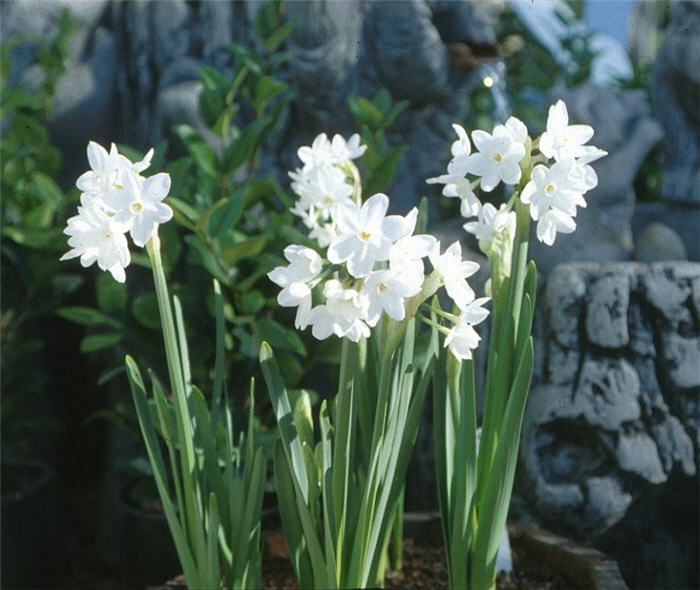| Botanical Name: Narcissus | |
| Common Name: Daffodil |

-
Anatomy
-
Culture
-
Design
Plant Type
Perennial, Bulb
Height Range
Under 1', 1-3'
Flower Color
Orange, Pink, Yellow, White
Flower Season
Winter, Spring
Leaf Color
Green, Blue Green
Bark Color
n/a
Fruit Color
n/a
Fruit Season
n/a
Sun
Full, Half
Water
Very Low, Low
Growth Rate
Moderate
Soil Type
Clay, Loam
Soil Condition
Average, Rich, Well-drained
Soil pH
Neutral
Adverse Factors
n/a
Design Styles
English Cottage, Formal, Japanese, Meadow, Mediterranean, Ranch, Spanish, Woodland
Accenting Features
Fragrance, Showy Flowers
Seasonal Interest
Spring
Location Uses
Background, Entry, Perennial Border, Shrub Border, Foundation, Parking Strip, Patio, Raised Planter, Walls / Fences, Walkways, With Rocks
Special Uses
Cut Flowers, Mass Planting, Naturalizing, Small Spaces
Attracts Wildlife
n/a
Information by: Stephanie Duer
Photographer: Linda Engstrom
Photographer: Linda Engstrom
-
Description
-
Notes
Daffodils are spring flowering bulbs that offer amazing color and bloom at a time when most garden perennials are only just waking up. They are divided into 13 divisions, which refer to the size of the cup or corona, and the perianth (or petals) and their relative sizes to each other. Some are fragrant. Colors are in the whites, yellow, oranges, pink, apricot, and so one, and many with different cup and perianth colors. All are perennial, some naturalize, a few are not cold hardy (the paperwhites come to mind).
Plant in full sun or at least 8 hours worth (after the leaves are on the trees) in well drained, well amended (loamy) soil. They are pest free, and unlike tulips, not tasty to deer. Deadhead to discourage seed formation, but otherwise leave the foliage until it is fully spent and laying on the ground. Plant late emerging grasses or perennials around them to hide the spent foliage. There is no need to dig them up every year, just plant them 3-times as deep as they are wide and let them be. Plant bulbs in the fall and water well at planting. They do well in low-water gardens but are not necessarily xeric, but over-watering may cause them to be short-lived. See Guides for more information.